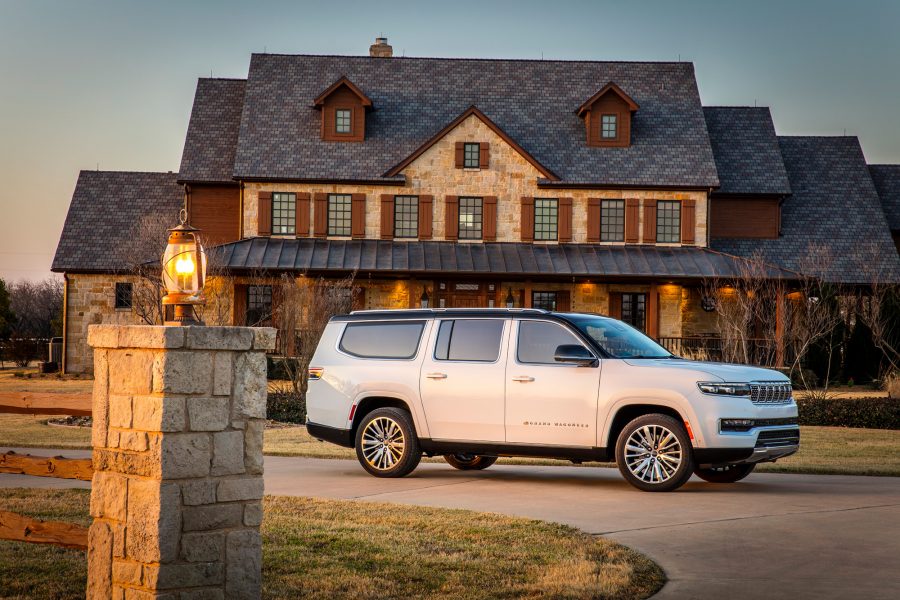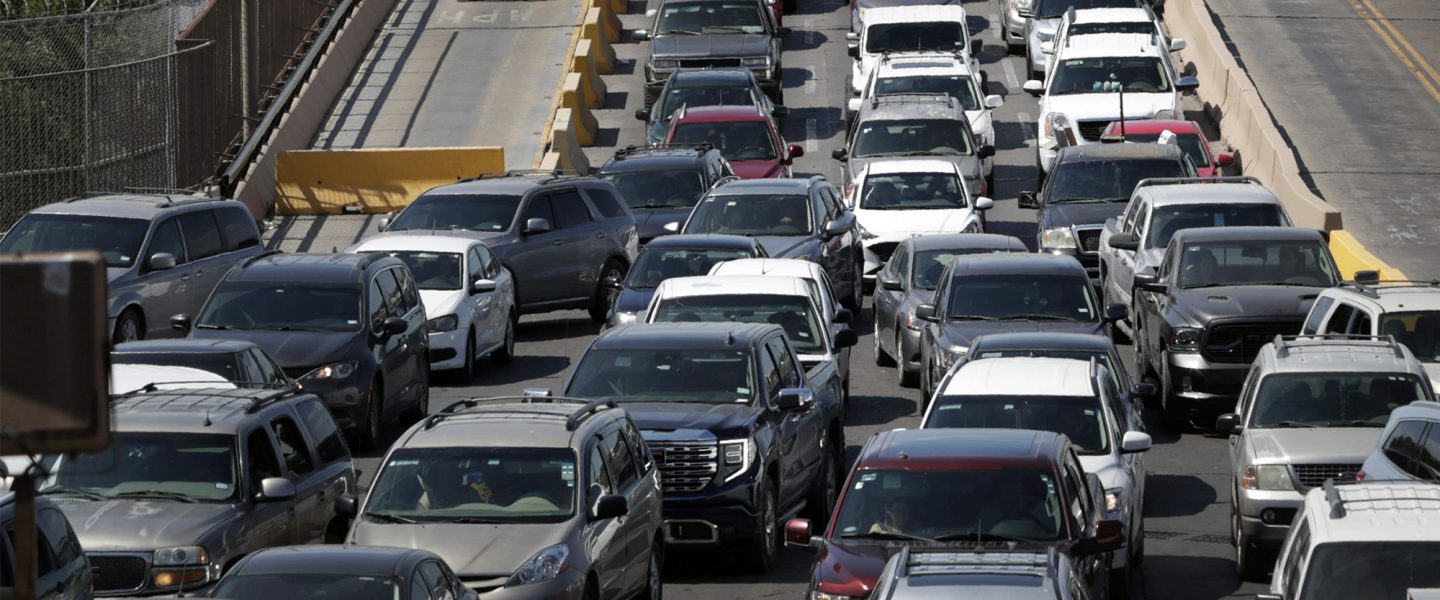If you are in the market for an affordable car, not a status symbol, you’re out of luck.
|
Listen To This Story
|
There is so much wrong with America right now that a hike through it all would require a tent and sleeping bag and a three-day out-of-office message for your gmail box.
Here are just a few of the porta-potties you’d encounter along the way: Tommy Tuberville, Ken Paxton, Tucker Carlson, Peter Navarro, the Proud Boys, Scott Adams, Elon Musk, George Santos, Vivek Ramaswamy, Jim Jordan, and Mike Huckabee.
What distinguishes this select group is that it is strictly limited to characters tagged as “Deplorables” in a single substack posting by conservative commentator Charlie Sykes, formerly editor of Right Wisconsin, and currently editor of The Bulwark.
We could add people and things to deplore deep into the night — Roger Stone, Greg Abbott, Ron DeSantis, the Wisconsin GOP, the Tennessee GOP, the NRA and the gun-besotted, Fox “News,” book banning, white supremacy, Rudy Giuliani, Lauren Boebert, J. D. Vance, Kari Lake, Marjorie Taylor Greene, Ron Johnson, Joseph Ladapo, Clarence Thomas and the rogue SCOTUS, Peter Thiel, Jared Kushner, Harlan Crow, Leonard Leo, Kevin McCarthy… and Donald Trump — and our hike would still have miles and miles to go.
Whether to a partisan of the Democrats or a partisan of democracy, the collective stench of it all is overpowering — and disorienting.
Our politics have never, in my lifetime at least, been so out of joint and so close to the cliff’s edge of fascism and autocracy.
But, in the midst of this wall-to-wall political woe, a seemingly nonpolitical item caught my attention today — one that suggested there’s something else wrong with America, a slipped stitch in the fabric that all these villains seem so intent on shredding.
That wrongness indicator is the price of cars.
Say what? You may well ask, “What does the price of cars have to do with the price of eggs?”
Actually, a lot, as both have been in the news as indicators of inflation. But that is not what is wrong here. Let me explain, beginning with the facts.
The average price of a new car today is more than $48,000. There is exactly one model-year 2024 car — the Mitsubishi Mirage, rumored soon to be discontinued — selling for under $20,000; five years ago, there were a dozen such cars to choose from.
On the high end, 32 new models retail above $100,000, nearly triple the number five years back, as the “luxury” share of the market hits nearly 1 in 5 of all vehicles sold. It is worth noting that this pricing trend is not substantially attributable to the impact of the very commendable growth of electric vehicle (EV) market share, which is still only 7.2 percent in the US.
Used cars are no refuge. Four years ago, half of that market went for under $20,000. Now just 1 in 8 used cars can be snagged so “cheaply.” Yes, you can get a high-mileage “beater” for $12K (it used to be $3K). But a low-mileage used car (like mine, a 2018 Mazda 3) is going to run you $25K. Why? Because that’s still a “bargain” compared to a new car.
This is not your garden-variety inflation; something else is going on here. Very simply, compact and affordable cars are out, big-ass SUVs and pickups are in.
Americans have long had a love affair with SUVs but now the major automakers, pretty much in lockstep, have decided to phase out their small-ticket, low-profit margin vehicles and churn out even more high-end, high-profit merch.
Some of this transformation has its roots in the supply chain issues of the pandemic, which forced automakers to ration their limited supplies of chips (all cars and trucks — internal combustion, electric, and hybrid — are now essentially computers on wheels). Why “waste” a good chip on a low-margin shitbox?
But now, even with chip and component supplies pretty much restored, the thinking is “Why even bother making those shitboxes?”
So in America, where car loan interest rates are pushing 10 percent, basic affordable cars are fast becoming a thing of the past. You know, four wheels and a seat (well, five seats), AC, moonroof, GPS, and enough power to get you where you want to go. Especially if you have a job, or two or three, or kids to take to school or daycare.
That is, if you’re in the market for a car, not a status symbol…
And are among the 90 percent of Americans whose collective wealth is eclipsed by that of the top 1 percent…
You’re basically out of luck.
This kind of stomach-turning inequality (in case you were wondering, the top 0.1 percent hold twice the wealth of the bottom half of American households) is itself a glaring symptom of American wrongness.
What does it say about us that we are a country of unnecessarily big and expensive cars at a time when our number one priority should be reducing our carbon footprint and our number two priority should be reducing our obscene wealth disparity?
But there’s more here to chew on — because we live in what is touted as a free-market economy, where the laws of supply and demand should at least theoretically hold sway. That suggests that if there were unmet demand for cheaper, smaller cars, automakers would go back to producing them — because it was once again profitable, at a higher price set by market forces, to do so.
Obviously, that is not happening. Which in turn suggests that either Americans have decided once and for all they don’t want smallish, affordable cars, or those who would want them (i.e., working class individuals and families) can’t afford them at any price that would provide automakers with a reasonable profit.
Meanwhile, at the high end there’s all sorts of interest in, and money to pay for, the $100K+ models that are proliferating. Some of these are Jags and Porsches but most are luxury SUVs and pickups, which increasingly dominate American roads.

What does this say about America in 2023? With wildfires consuming the continent’s forests, with hurricanes and storm surges battering our shores, with heat waves parching our prairies and melting the pavement of our cities, and with anyone of sound mind wondering what they can possibly do to stop or slow the advance of human-generated global warming, what have American drivers told us they need and want? Bigger cars!
Cars and trucks that consume more fuel, whether fossil or electric. Cars and trucks with double the environmental footprint. Cars and trucks with room for eight (but occupied the vast majority of the time by one). Cars and trucks that, if you happen to be puttering along in a VW Golf or Kia Soul or (discontinued) Honda Fit on a winding mountain highway, scare the hell out of you as they roar past like the big bad kids in the schoolyard — and make you say to yourself, “Whoa! If I want to actually survive a crash out here, I’d better get a bigger car.”
What — if anything — are we thinking?
What does it say about us that we are a country of unnecessarily big and expensive cars at a time when our No. 1 priority should be reducing our carbon footprint and our No. 2 priority should be reducing our obscene wealth disparity?
What does it say that producers and consumers seem to be on the same page when it comes to this national stupidity?
What does it say that, post-pandemic, our roads are once again jammed with single-occupant vehicles while the “carpool” lanes, take away the scofflaws, are just about empty?
What does it say that satisfactory public transportation (a truly environment-friendly option) is available to so few?
And what does it say that our dominant answer to global warming is “I’m just going to keep doing my thing — in a nice, big, expensive car or truck I don’t need — and somebody else will just have to deal with it?”
There is so much wrong with this picture, this panorama. Perhaps if we were a better country we’d deserve better politics. Perhaps some of that deplorability is closer to home than we like to think.
Jonathan D. Simon is a senior editor at WhoWhatWhy and author of CODE RED: Computerized Elections and the War on American Democracy.
WhoWhatWhy values our readers’ input and encourages you to drop us a note with your thoughts on this article at MyView@whowhatwhy.org.




